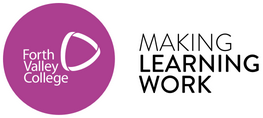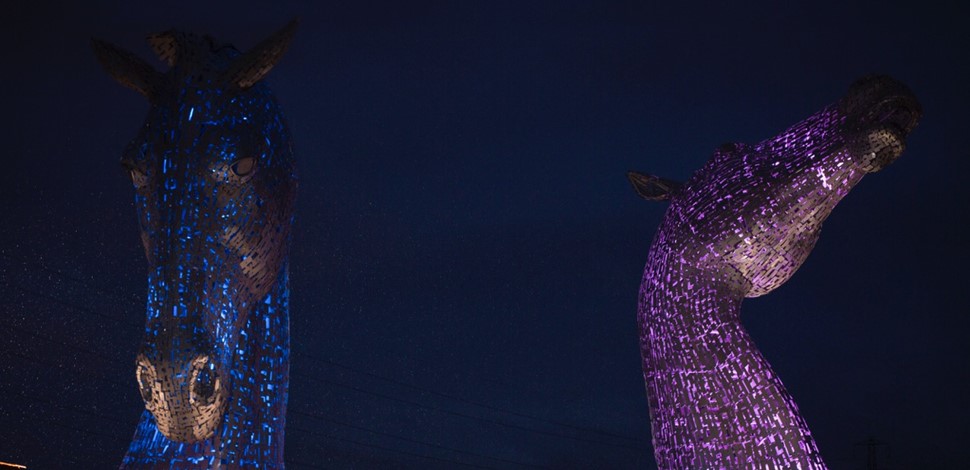Falkirk's iconic Kelpies lit up to highlight the fight to find a cure for the degenerative brain condition Huntington's disease (HD) recently and a Forth Valley College student was there to capture the scene.
The Kelpies joined a host of prominent buildings around in the world, including Niagara Falls, Mansion House in Dublin and Barcelona's Grand Plaza, illuminated in the international HD colours of purple and blue to show support for families affected by the condition.
Fiona Read (31) from Sauchie – an HND Photography Student based at Forth Valley College’s Stirling Campus – was asked by the Scottish Huntington’s Association (SHA), the only charity in the country supporting families affected by HD, to take the photograph on Wednesday 18 May.
The SHA supports families living with HD through a team of specialist nurses, the world's only HD youth support and a financial wellbeing helpdesk.
SHA service manager, Bob Bogle, who organised the light up said:
“We were delighted when the Kelpies agreed to take part in 'Light Up For HD'. It is a disease that is still widely misunderstood so anything that can be done to highlight the impact it has on people's lives is much appreciated.
“This was a global campaign with countries in North America and all over Europe taking part, so it's brilliant the Kelpies could add Scotland's voice to raising awareness of the devastating condition. Also a big thanks to Fiona for her great picture.”
HD is estimated to affect around 1100 people in Scotland without about another 5000 at risk of potentially developing the disease. HD is incurable genetic brain disorder that usually starts between the ages of 35 and 45 years. It begins with personality changes that can make those diagnosed aggressive, anxious and depressed. The disease progresses slowly, with changes to muscle control that slowly erodes mobility and the ability to talk. As it progress those affected will need 24 care. It is also hereditary with each child of those diagnosed at 50% rick developing the disease.


